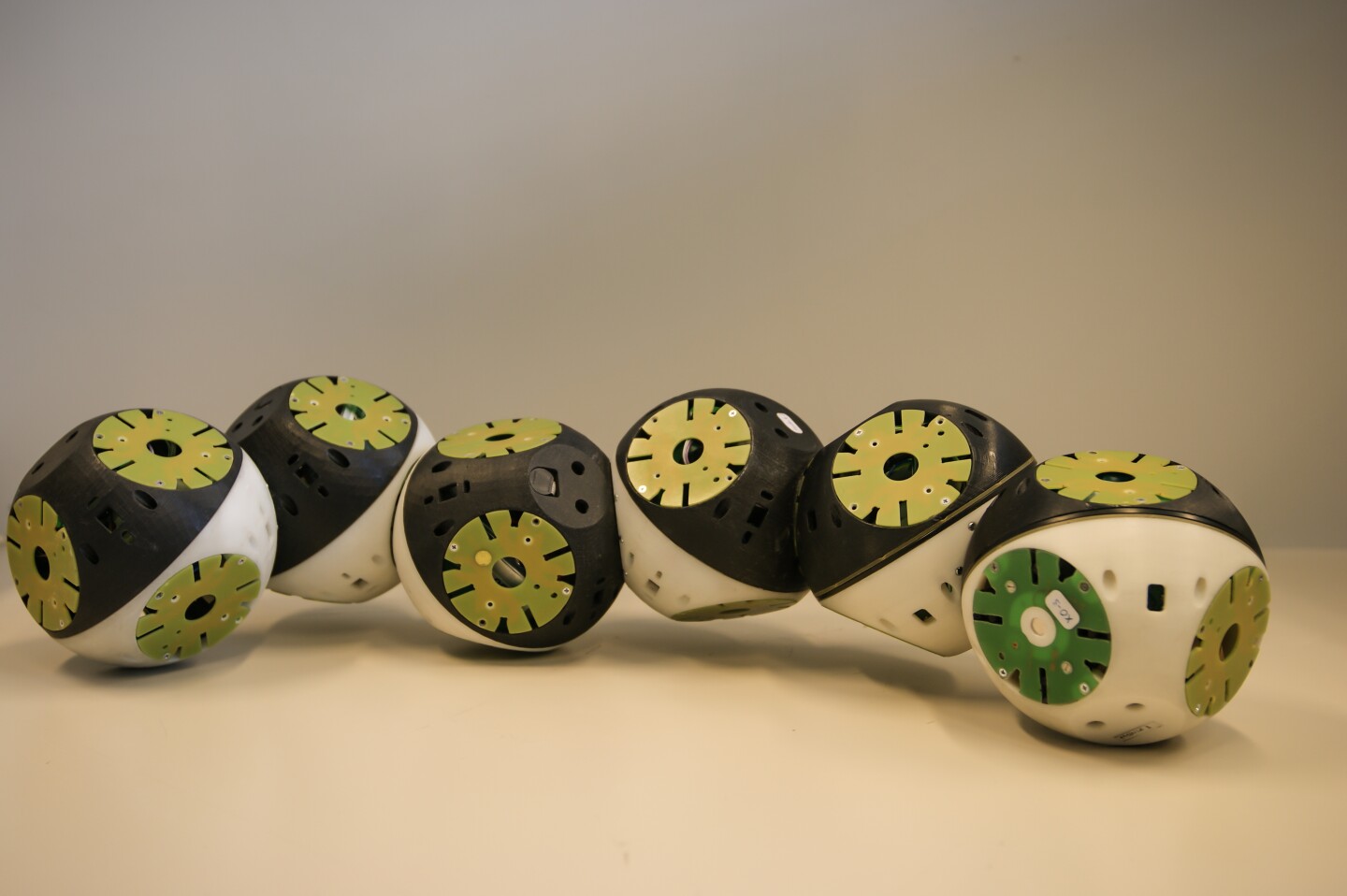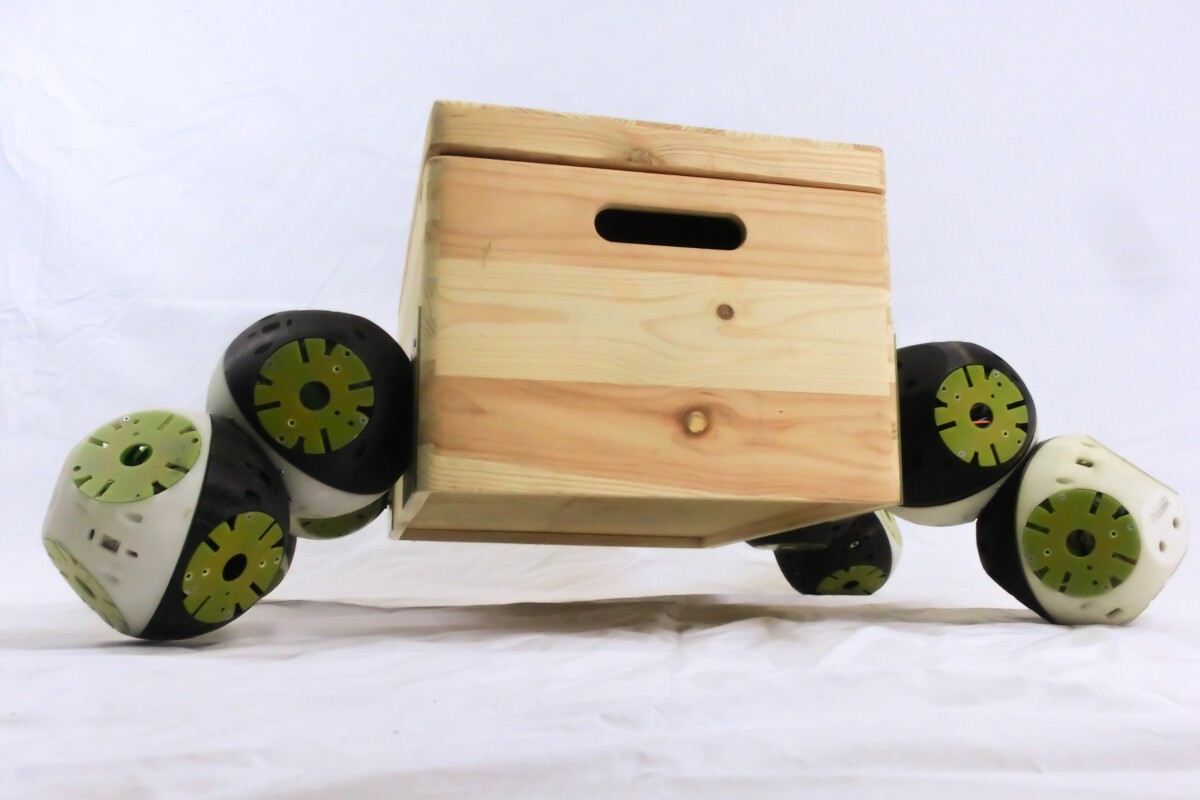Envision small robotic modules, lifting the lid of a storage box, spilling out, rearranging themselves to be the box's legs and transporting it to where you might be seated. That's exactly what Swiss researchers are aiming to create with Roombots, reconfigurable robotic modules that connect to each other to transform themselves into any type of furniture and change shape when needed (from a chair to a table, for example). Designed to help the disabled or elderly, by morphing to suit their needs, the adaptive robotic furniture modules can even be attached to existing furniture to give greater flexibility and the power to move.
Created by the Biorobotics Laboratory (BioRob) at École polytechnique fédérale de Lausanne (EPFL), the self-assembling Roombots can band together to make static furniture like a box, a sofa or a wall. They attach to each other via connectors which enables them to take on the desired shape. The team's main goal is to create self-assembling interactive furniture that can be used in a variety of ways.

For instance, a person lying down on a Roombot bed, could slowly be moved into a seated position, or a table could scoot over to a corner or tilt itself to help a book slide into a person's hands. The team has solved a number of significant milestones, such as the having the Roombots move freely, to bring all this multi-functionality closer.
"We start from a group of Roombot modules that might be stacked together for storage," Massimo Vespignani, a PhD student at BioRob, tells Gizmag. "The modules detach from this pile to form structures of two or more modules. At this point they can start moving around the room in what we call off-grid locomotion. We are currently trying to control larger structures, while trying to reduce as much as possible the energy consumption and impacts with the ground."
The Roombots can even climb up a wall or over a step, when the surface is outfitted with connector plates. They're are also capable of picking up connector plates and arranging them to form, say, a table's surface.
"A single module can autonomously reach any position on a plane (this being on the floor, walls, or ceiling), and overcome a concave edge," says Vespignani. "In order to go over convex edges two modules need to collaborate."

Aside from helping the elderly, the Roombots could be used to create interactive art, programmable conference rooms, fun robotic kits or come in handy on search and rescue or space missions.
"The advantage would be that the modules can be tightly packed together for transportation and then can reconfigure into any type of structure (for example a robotic manipulator)," explains Vespignani.
The team is giving the Roombots the ability to attach themselves to passive elements and structures, too, allowing them to be manipulated more easily.
"We can 'augment' existing furniture by placing compatible connectors on it and attaching Roombots modules to allow it to move around the house," says Vespignani.

Currently engaged in improving the robustness and reliability of the Roombots modules, the team hopes to have them ready for industrial development in about 15 years time.
"Our ultimate goal is for sure to improve the quality of life," Vespignani tells us. "There are still a lot of research questions and technical challenges to solve. I would say they could be in the market in 20 years."
The team's paper on the research is due for publication in the Journal Robotics and Autonomous Systems
(July 2014)The video below demonstrates the reconfigurable abilities of the Roombots.
Source: BioRob EPFL
















